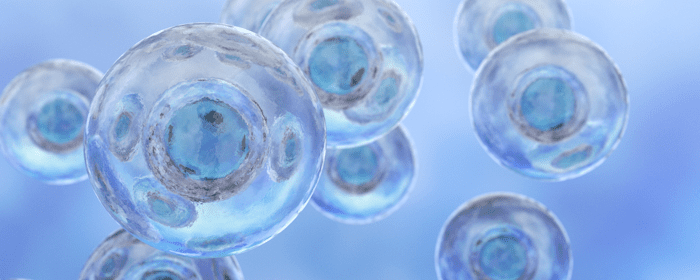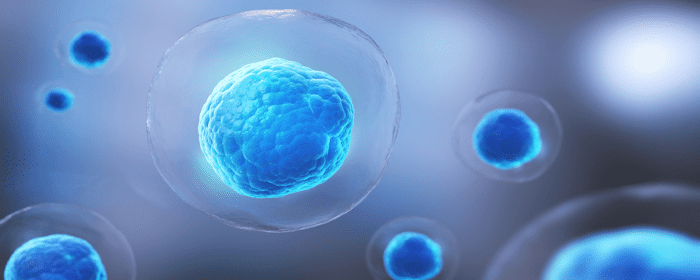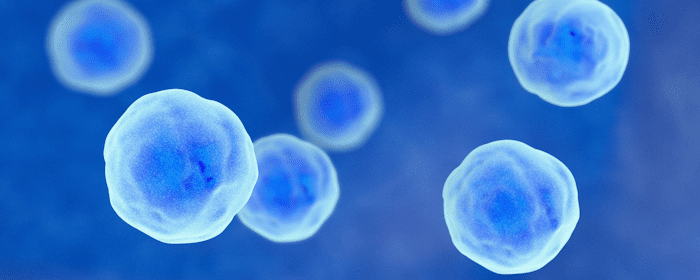
by admin | Jun 7, 2023 | Stem Cell Therapy, Mesenchymal Stem Cells, Osteoarthritis, Regenerative Medicine
Osteoarthritis (OA) is the most common form of arthritis and is estimated to affect over 500 million people worldwide. A result of the progressive deterioration of the protective cartilage that cushions the ends of the bones, OA most commonly affects the hands, knees, hips, and spine and is characterized by pain, stiffness, and loss of mobility in and around the affected areas.
Without a known way to treat and/or prevent OA from occurring, current conventional treatment of the condition typically involves a combination of prescription and OTC drugs, physical therapy, and lifestyle adjustments in an effort to treat and slow the progression of the symptoms associated with OA.
As the beneficial applications of stem cells continue to emerge, and considering their ability to replace and repair cells and tissues throughout the body, researchers believe that they can be used to treat joint disorders, including OA. The majority of the current stem cell therapies being investigated for use in treating OA use mesenchymal stem cells (MSCs), primarily due to their multilineage differentiation towards cell types in the joints and for their immunoregulatory functions.
In this review, Kong et al. provide detailed information on OA and MSCs, share updated information on pre-clinical and clinical trials and related applications of MSCs, and discuss additional efforts on cell-based therapy for treating OA and other joint and bone diseases.
Several preclinical models have investigated MSCs in treating OA and have demonstrated success in generating cartilage from MSCs. In addition, several animal models have demonstrated the beneficial effect of MSCs on cartilage, including protecting existing cartilage, repairing defects of joint cartilage, regenerating and enhancing cartilage, and even preventing OA.
Additionally, there have been several animal models evaluating the effects of intra-articular injection of MSCs for treating OA with researchers noting marked regeneration of tissue and decreased degeneration of articular cartilage.
Clinical trials using MSCs to treat human joint cartilage defects have found that MSCs could be used to repair cartilage defects, improve joint function, reduce pain, and have demonstrated the potential to use MSC therapy for cartilage repair and regeneration as a way to reduce signs and symptom commonly associated with OA.
Although these studies have demonstrated the tremendous potential associated with the use of MSCs for treating OA, they have also highlighted some potential concerns associated with MSC-based therapy. These concerns include determining the specific number and type of MSCs best suited for treating OA, a better understanding of the timing and delivery strategies for the administration of MSCs, and identifying the stages of disease best suited for MSC therapy.
Further concerns highlighted by the authors include the potential of genetic influences when using autologous MSC cells for treatment, the potential for the overall quality of MSC cells used in older patients to be too low, and the overall safety of stem cell therapy as a therapeutic treatment option for OA.
Despite the concerns identified above, Kong et al. conclude that the advancement of regenerative medicine and innovative stem cell technology offers a unique and exciting opportunity to treat OA.
Source: “Role of mesenchymal stem cells in osteoarthritis treatment – NCBI.” https://www.ncbi.nlm.nih.gov/pmc/articles/PMC5822967/.

by Stemedix | Jun 5, 2023 | Traumatic Brain Injury
TBI stands for Traumatic Brain Injury. It refers to an injury to the brain caused by a sudden and forceful impact to the head or by an object penetrating the skull and entering the brain tissue. TBI can result from various incidents, such as falls, motor vehicle accidents, sports injuries, assaults, or explosive blasts. So how does TBI affect the brain?
TBI can range in severity from mild to severe, depending on the extent of damage to the brain. Common causes of TBI include the brain hitting the inside of the skull (coup-contrecoup injury), the brain twisting or rotating within the skull (shear injury), or objects penetrating the skull and directly damaging brain tissue.
The effects of TBI can vary widely depending on the severity and location of the injury, as well as individual factors. Some individuals may recover fully or experience mild impairments, while others may face long-term disabilities or even permanent damage.
General Ways TBI Can Affect the Brain:
So exactly how does TBI affect the brain?
Physical damage: TBI can cause physical damage to brain tissue. The impact can result in bruising, bleeding, and swelling in the brain. These physical changes can disrupt the normal functioning of brain cells and neural connections.
Cognitive effects: TBI can lead to various cognitive impairments. These can include difficulties with memory (both short-term and long-term), attention, concentration, problem-solving, and decision-making. TBI may also affect a person’s ability to process and understand information, learn new things, and think abstractly.
Motor and sensory problems: Depending on the location and extent of the injury, TBI can cause motor problems such as weakness, paralysis, poor coordination, and balance issues. Sensory changes may occur, including alterations in vision, hearing, taste, or smell.
Emotional and behavioral changes: TBI can have a significant impact on a person’s emotional well-being and behavior. Some individuals may experience mood swings, irritability, anxiety, depression, or increased agitation. Personality changes, impulsivity, difficulty with self-regulation, and social inappropriateness are also possible.
Communication difficulties: TBI can affect a person’s ability to communicate effectively. Language impairments, such as difficulties with speaking, understanding, or expressing oneself, may arise. It can also affect the comprehension and production of written language.
Sensitivity to stimuli: Some individuals with TBI may become more sensitive to light, noise, or other environmental stimuli. They may experience discomfort or increased agitation in situations that were previously tolerable.
What Are Treatment Options for TBI?
The treatment options for Traumatic Brain Injury (TBI) depend on the severity and specific symptoms of the injury. It’s important to note that treatment should be individualized and tailored to the needs of the person with TBI. Here are some common treatment options:
- Medical management: In the acute phase, medical interventions focus on stabilizing the individual, ensuring proper oxygenation and blood flow to the brain, and addressing any life-threatening conditions. This may involve surgery to remove hematomas or repair skull fractures, medications to control seizures or reduce brain swelling, and monitoring of vital signs and intracranial pressure.
- Rehabilitation therapies: Rehabilitation plays a crucial role in the recovery process for individuals with TBI. Different types of therapy may be used, including:
- Physical therapy: To improve strength, coordination, balance, and mobility.
- Occupational therapy: To help individuals relearn daily activities and regain independence.
- Speech and language therapy: To address communication difficulties, swallowing problems, and cognitive-communication impairments.
- Cognitive rehabilitation: To improve cognitive functions such as memory, attention, problem-solving, and executive functioning.
- Vocational rehabilitation: To assist with returning to work or finding new employment options.
- Medications: Medications may be prescribed to manage specific symptoms and complications associated with TBI. These can include:
- Analgesics: To alleviate pain.
- Anti-seizure medications: To prevent or control seizures.
- Muscle relaxants: To reduce muscle spasticity or stiffness.
- Antidepressants or anti-anxiety medications: To manage mood disorders and emotional symptoms.
- Stimulants: To improve attention and concentration in cases of attention deficits.
- Psychological and behavioral interventions: TBI can have significant psychological and behavioral effects. Psychotherapy, counseling, and behavioral interventions may be recommended to help individuals cope with emotional challenges, address behavioral changes, manage stress, and improve overall psychological well-being.
- Assistive devices and technology: Depending on the specific impairments resulting from TBI, assistive devices and technology can be beneficial. These can include mobility aids, communication devices, memory aids, and other assistive technologies that support independence and quality of life.
- Supportive care and education: Providing a supportive environment and educating both the person with TBI and their family members about the condition, treatment options, and strategies for managing symptoms is crucial. Support groups, educational resources, and counseling services can offer emotional support and practical guidance throughout the recovery process.
Regenerative Medicine for TBI
Regenerative Medicine, also known as stem cell therapy, is another option patients are exploring for the management and potential healing of their TBI. Mesenchymal stem cell (MSC) therapy is a promising area of research for the treatment of Traumatic Brain Injury (TBI). MSCs are a type of adult stem cell that can be obtained from various sources, such as bone marrow or umbilical cord tissue.
MSCs have the potential to promote tissue repair and regeneration through multiple mechanisms. They can differentiate into various cell types, including neural cells, and contribute to the replacement of damaged cells in the brain. MSCs also secrete factors that have anti-inflammatory, neuroprotective, and regenerative effects. These factors can modulate the immune response, reduce inflammation, promote angiogenesis (formation of new blood vessels), and enhance neuronal survival and repair.
Preclinical studies have demonstrated that MSC transplantation can improve cognitive function, reduce brain inflammation, enhance tissue repair, and promote functional recovery.
It’s important to work closely with a healthcare team specialized in TBI to determine the most appropriate treatment plan based on individual needs and goals. The effects of TBI can vary widely between individuals and depend on factors such as the severity of the injury, the specific brain regions affected, and the individual’s overall health. Rehabilitation, therapy, and support from healthcare professionals can play a crucial role in managing the effects of TBI and maximizing recovery. To learn more about TBI and other health conditions contact Stemedix today!

by admin | May 31, 2023 | Stem Cell Therapy, Regenerative Medicine
Neuropathic pain (NP) is a complex, wide-ranging, and often debilitating condition that contributes to chronic pain. Caused by a number of different factors and contributors, the condition most commonly involves disease, chronic condition, or injury to the nervous system.
Defined by the International Association for the Study of Pain (IASP) as pain that occurs as a direct consequence of a lesion or disease affecting the somatosensory system, NP is responsible for 20 to 25% of patients who experience chronic pain and is estimated to affect 8% of the population.
While there have been significant improvements in pharmacological and nonpharmacological treatment for NP, these practices only provide consistent and lasting pain relief to a small percentage of patients. Recently regenerative medicine, also known as stem cell therapy, is being explored as a safe and effective NP therapy option.
In this review, Joshi et al. explore the possibilities of using stem cells in NP patients and discuss the relevant challenges associated with their uses in this application.
After identifying and defining the nine most common conditions associated with chronic, persistent, or recurring NP, the authors begin this review by pointing out that NP, to date, has been poorly recognized, poorly diagnosed, and poorly treated. A review of relevant literature has also demonstrated that the treatment of NP has consistently been a significant challenge for physicians, with most attempting to manage NP by targeting clinical symptoms rather than causative factors.
Most often, pharmacological treatment approaches for managing NP have included a variety of first-line drugs (tricyclic antidepressants, serotonin-norepinephrine reuptake inhibitors, and gabapentinoids) and opioid analgesics (tramadol) as second-line drugs. Third-line pharmacological NP treatment includes stronger opioids, such as morphine and oxycodone. Nonpharmacological NP treatment options for drug-refractory NP include interventional therapies (peripheral nerve blockade and epidural steroid injection), physical therapies (massage and ultrasound), and psychological therapies (cognitive behavioral therapy).
Long believed to arise from neurons, recent studies have demonstrated the important role of immune system response in the development of NP. Specifically, immune cells were found not only to be the source of pain mediators but also to produce analgesic molecules. These findings led researchers to believe that neutrophils and macrophages could each have a major role in early NP development.
Research has indicated that nerve injuries trigger an organized series of events to mount an inflammatory response. As part of this response to injury, pain following nerve damage has been shown to be mitigated by cytotoxic natural killer cells that selectively clear out partially damaged nerves. Additionally, this research has increasingly demonstrated that the immune system interacts with the sensory nervous system, contributing to persistent pain states.
Pharmacological and nonpharmacological treatment approaches have only produced temporary pain relief in patients with NP. Recently, stem cell transplantation has demonstrated significant potential for repairing nerve damage in NP and has emerged as a potential alternative therapeutic treatment approach. While the exact mechanism underlying stem cell-mediated pain relief remains unclear, specific stem cells (human mesenchymal stem cells, or hMSCs) have demonstrated the potential to provide trophic factors to the injured nerve as well as the ability to replace injured or lost neural cells.
While stem cell-based therapies have been shown to protect against neurodegeneration and promote neuroregeneration, the authors point out several issues that need to be addressed. These outstanding issues include identifying the optimal dosing for stem cell transplantation in the treatment of NP, sourcing of stem cells, considerations of autologous versus allogeneic transplants, precommitment to neuronal lineage, and specific dosing requirements.
Joshi et al. conclude that while NP is a chronic heterogeneous condition of the sensory nervous system with no current curative treatment, stem cells present exciting therapeutic prospects for NP. While further research to understand the exact mechanism underlying stem cell-mediated pain relief is required, current literature provides evidence of the potential of stem cells in slowing the degeneration process while promoting the survival and recovery of damaged nerves.
Source: Stem Cell Therapy for Modulating Neuroinflammation in … – NCBI.” 3 May. 2021, https://www.ncbi.nlm.nih.gov/pmc/articles/PMC8124149/.

by Stemedix | May 29, 2023 | COPD
In this article, we are going to outline exactly what COPD is and the best treatment for COPD. COPD stands for chronic obstructive pulmonary disease. It is a chronic respiratory disease characterized by persistent airflow limitation that makes it difficult to breathe properly. COPD primarily affects the lungs and is usually caused by long-term exposure to irritating substances such as cigarette smoke, air pollution, and occupational dust and chemicals.
The two main conditions included under the umbrella term COPD are chronic bronchitis and emphysema:
Chronic bronchitis: This condition involves inflammation and narrowing of the airways, leading to increased production of mucus and persistent cough. Coughing and excessive mucus production typically last for at least three months per year for two consecutive years.
Emphysema: This condition involves damage to the air sacs (alveoli) in the lungs, which results in the loss of their elasticity. As a result, the air sacs are unable to fully deflate, leading to difficulty in exhaling air. This leads to air trapping in the lungs and reduced oxygen exchange.
The common symptoms of COPD include shortness of breath, chronic cough, wheezing, chest tightness, and increased mucus production. These symptoms tend to worsen over time, especially with continued exposure to respiratory irritants. COPD is a progressive disease, meaning it gradually worsens over time and can significantly impact a person’s quality of life.
Diagnosis of COPD typically involves a combination of medical history evaluation, physical examination, lung function tests (such as spirometry), and imaging tests like chest X-rays or CT scans. Early detection and diagnosis are crucial for effective management and treatment.
What Treatments Help Manage COPD?
The best treatment for chronic obstructive pulmonary disease (COPD) depends on the individual’s specific condition and its severity. COPD is a chronic respiratory disease characterized by airflow limitation and includes conditions such as chronic bronchitis and emphysema. While there is no cure for COPD, various treatment options are available to manage symptoms, improve lung function, and enhance overall quality of life. Here are some commonly used treatments:
- Medications: Bronchodilators are frequently prescribed to relax the muscles around the airways, making breathing easier. They can be short-acting or long-acting, and examples include beta-agonists and anticholinergics. Inhaled corticosteroids may be used to reduce airway inflammation in some cases.
- Oxygen therapy: Supplemental oxygen may be necessary if blood oxygen levels are low. Oxygen can be administered through nasal prongs, masks, or portable devices, as prescribed by a healthcare professional.
- Pulmonary rehabilitation: This is a structured program that combines exercise training, breathing techniques, and education to improve lung function, increase exercise tolerance, and enhance quality of life. It may involve a team of healthcare professionals, such as physiotherapists, respiratory therapists, and dietitians.
- Lifestyle changes: Quitting smoking is vital for slowing the progression of COPD. Avoiding exposure to environmental irritants, such as secondhand smoke and air pollution, is also important. Eating a healthy diet, staying physically active (within one’s limitations), and maintaining a healthy weight can support overall lung health.
- Vaccinations: Annual flu vaccinations are recommended for individuals with COPD to prevent respiratory infections. The pneumococcal vaccine is also advised to protect against certain strains of pneumonia.
- Surgical interventions: In severe cases of COPD, surgical options like lung volume reduction surgery (LVRS) or lung transplantation may be considered. These options are typically reserved for carefully selected individuals who meet specific criteria.
It is crucial for individuals with COPD to work closely with their healthcare providers to develop an individualized treatment plan based on their specific needs and circumstances. Regular follow-up appointments and adherence to the prescribed treatment are essential for effective management of COPD.
Regenerative Medicine for COPD
Regenerative medicine is a new area of medicine that holds potential in the field of COPD research and treatment. Regenerative medicine, also known as stem cell therapy, aims to restore, repair, or replace damaged tissues. While regenerative medicine is not currently considered traditional treatment for COPD, here are some ways it may potentially contribute to COPD management:
Stem cell therapy: Stem cells have the ability to develop into different types of cells in the body. Researchers are exploring the use of stem cell therapy, particularly mesenchymal stem cells (MSCs), as a potential treatment for COPD. MSCs have shown promise in reducing inflammation and promoting tissue repair in preclinical and early clinical studies. These stem cells can be derived from different sources, such as bone marrow or adipose tissue, and can be delivered directly into the lungs or systemically.
Mesenchymal stem cell (MSC) therapy is a potential regenerative medicine approach. MSCs are a type of adult stem cell that can differentiate into various cell types, possess anti-inflammatory properties, and have the ability to modulate the immune response. These characteristics make them attractive for potential therapeutic applications in COPD. Here’s an overview of MSC therapy for COPD:
- Mechanisms of action: MSCs have shown several mechanisms of action that can potentially benefit individuals with COPD. They can reduce inflammation in the lungs, promote tissue repair and regeneration, modulate immune responses, and secrete factors that can enhance the local environment and support healing.
- Sources of MSCs: MSCs can be derived from various sources, including bone marrow, adipose tissue (fat), umbilical cord tissue, and other tissues. Each source has its advantages and disadvantages, and research is ongoing to determine the most effective and safe sources of MSCs for COPD treatment.
- Administration of MSCs: MSCs can be delivered to the lungs through different routes, including intravenous (IV) infusion, inhalation, or direct injection into the lung tissue.
- Research and clinical trials: Preclinical studies and early-phase clinical trials have demonstrated some promising results for MSC therapy in COPD. These studies have shown improvements in lung function, reduction in inflammation, decreased airway remodeling, and enhanced exercise capacity.
While there is no cure for COPD, various treatment options are available to relieve symptoms, slow disease progression, and improve quality of life. These treatments often involve a combination of medications, pulmonary rehabilitation, oxygen therapy, and lifestyle modifications such as smoking cessation and avoiding respiratory irritants.
It is important for individuals with COPD to work closely with healthcare professionals to develop a personalized treatment plan and regularly monitor their condition to effectively manage COPD and minimize its impact on daily life.

by admin | May 24, 2023 | Stem Cell Therapy, Mesenchymal Stem Cells, Stem Cell Research, Stroke
With nearly 15 million people affected worldwide each year, stroke continues to be the most prevalent cerebrovascular disease. Responsible for over 5 million deaths and another 5 million individuals suffering long-term disabilities, stroke also is the leading cause of mortality and morbidity worldwide.
Although there have been significant advances in both pharmacological and surgical therapies designed to treat the effects of stroke, effective therapy remains limited and primarily focused on managing the symptoms associated with a stroke rather than treating the causing factors or preventing the stroke at the onset.
Recently regenerative medicine, also known as stem cell therapy, and specifically mesenchymal stem cell (MSC)-based therapy has been identified as a potentially effective strategy for a wide range of diseases and health conditions, including stroke.
In this review, Li et al. examine current preclinical and clinical data from trials using MSCs in the treatment of stroke, the mechanisms underlying MSC-based therapy for stroke, and the challenges associated with the timing and delivery of MSCs.
Initial preclinical studies of the application of MSCs in the treatment of stroke demonstrated that transplantation of MSCs following ischemic stroke promoted improvement of cerebral function protected the ischemic neurons, and repaired brain damage. However, these studies were conducted in young and healthy subjects and failed to factor in the presence of comorbidities, such as diabetes and hypertension, more commonly observed in ischemic stroke patients.
Considering that 75% of strokes occur in the elderly and/or those with the previously mentioned comorbidities, the authors of this review focused their review on studies that incorporated these two factors into their trials.
While these preclinical studies of MSC-based therapy for stroke demonstrated promising results, including improved blood-brain barrier integrity, increased white matter remodeling, and improved neural repair, the authors point out that there has been a limited number of preclinical studies conducted and call for additional preclinical studies specifically utilizing the comorbidity model.
Although treatment of stroke using MSCs has been established to be safe and feasible in phase I and II clinical trials, there have been mixed findings as to the therapy’s efficacy. As a result of these varied findings, the overall efficacy in the treatment of ischemic stroke remains controversial. The authors consider several reasons for the inconsistency of results observed in these trials, including the varied number of patients, doses, and type of cell delivery, the timing of the cell therapy, and the treatment modalities used in these trials; the authors also call attention to the different locations, extent, and severity of lesions used in these trials.
As a result of the inconclusive results surrounding the effectiveness of MSC-based therapy for the treatment of stroke in these clinical trials, the authors call for more optimized and well-designed large-sample multicenter studies to evaluate the therapeutic efficacy of MSCs more thoroughly in ischemic stroke.
While the underlying mechanisms of MSC-based therapy for stroke have not been fully explained or understood, a review of several studies has demonstrated that MSCs protect against stroke through multiple mechanisms, including direct differentiation, paracrine effects, and mitochondrial transfer.
Before MSCs can be widely applied in clinical practice, Li et al. highlight several challenges that need to first be considered. These challenges include determining the optimal time for MSC administration during the acute stroke stages, further understanding the best treatment, conditions, and strategies to maximize the regenerative potential of MSCs, identifying the simplest and safest route of MSC delivery, and identifying the best source of MSCs for stroke treatment.
The authors conclude this review by recommending future preclinical and clinical studies that consider the adoption of a well-designed randomized controlled study design and method rigor and intervention measures to determine the effect of MSC therapy in the treatment of stroke.
Even with considering the above recommendations, MSCs continue to demonstrate exciting potential as a means to protect neurons and improve outcomes and overall quality of life for stroke patients.
Source: “Mesenchymal Stem Cell-Based Therapy for Stroke – NCBI.” 9 Feb. 2021, https://www.ncbi.nlm.nih.gov/pmc/articles/PMC7899984/.






 St. Petersburg, Florida
St. Petersburg, Florida
